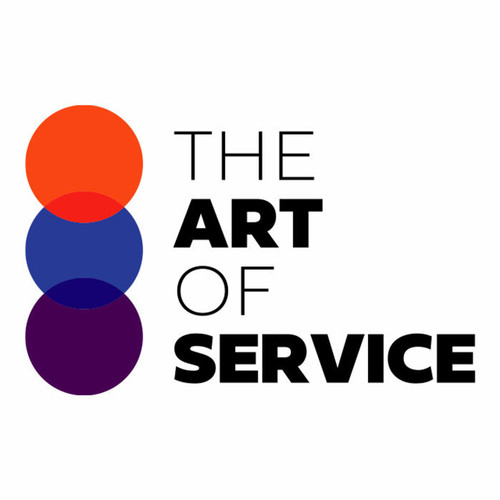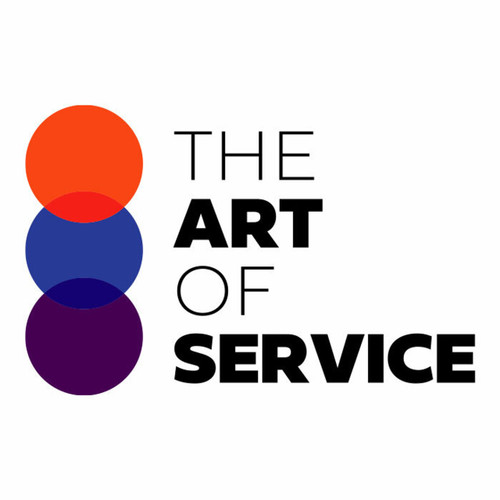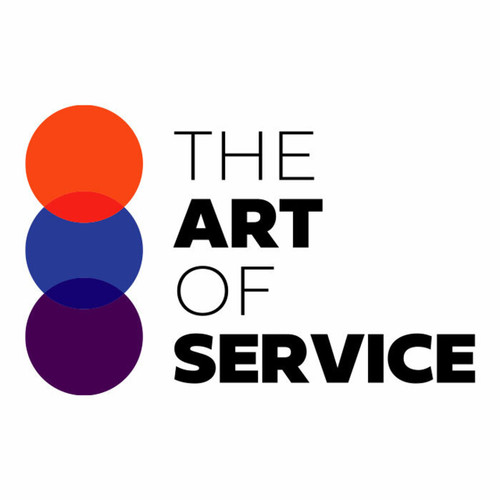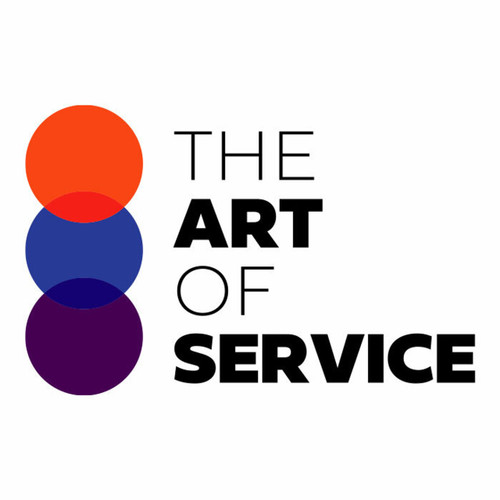Are you tired of constantly struggling with forecasting schedules for your projects? Look no further than our Schedule Forecasting in Earned value management Knowledge Base.
Our comprehensive database contains 1516 prioritized requirements, solutions, benefits, and real-life case studies that will provide you with all the necessary tools to effectively forecast schedules.
With our knowledge base, you will have access to the most important questions to ask in order to get results that are both urgent and within the scope of your project.
But what sets our product apart from our competitors and alternatives? Our Schedule Forecasting in Earned value management dataset is specifically created for professionals like you, who understand the importance of accurate scheduling in project management.
It is easy to use, affordable, and a DIY alternative to costly software programs.
Our product provides a detailed overview of Schedule Forecasting in Earned value management, including its benefits and how it compares to semi-related product types.
By using our dataset, you will save time and resources, ultimately boosting your project′s success and productivity.
Not only that, but our research on Schedule Forecasting in Earned value management is backed by years of experience and expertise in the field.
We understand the specific needs and challenges that project managers and businesses face when it comes to forecasting schedules, and our Knowledge Base has been designed to cater to those needs.
By using our Schedule Forecasting in Earned value management Knowledge Base, you will see a significant improvement in your project′s efficiency and cost-effectiveness.
Say goodbye to the constant struggle of schedule forecasting and hello to a more streamlined and successful project management process.
Don′t let inaccurate scheduling hold you back any longer.
Try our Schedule Forecasting in Earned value management Knowledge Base today and experience the difference it can make for your business.
With its affordable cost and numerous benefits, it′s a no-brainer for any project manager or business professional.
Don′t miss out on this opportunity to take your project management skills to the next level.
Order now and see the results for yourself!
Discover Insights, Make Informed Decisions, and Stay Ahead of the Curve:
Key Features:
Comprehensive set of 1516 prioritized Schedule Forecasting requirements. - Extensive coverage of 109 Schedule Forecasting topic scopes.
- In-depth analysis of 109 Schedule Forecasting step-by-step solutions, benefits, BHAGs.
- Detailed examination of 109 Schedule Forecasting case studies and use cases.
- Digital download upon purchase.
- Enjoy lifetime document updates included with your purchase.
- Benefit from a fully editable and customizable Excel format.
- Trusted and utilized by over 10,000 organizations.
- Covering: Organizational Structure, Project Success, Team Development, Earned Schedule, Scope Verification, Baseline Assessment, Reporting Process, Resource Management, Contract Compliance, Customer Value Management, Work Performance Data, Project Review, Transition Management, Project Management Software, Agile Practices, Actual Cost, Work Package, Earned Value Management System, Supplier Performance, Progress Tracking, Schedule Performance Index, Procurement Management, Cost Deviation Analysis, Project Objectives, Project Audit, Baseline Calculation, Project Scope Changes, Control Implementation, Performance Improvement, Incentive Contracts, Conflict Resolution, Resource Allocation, Earned Benefit, Planning Accuracy, Team Productivity, Earned Value Analysis, Risk Response, Progress Monitoring, Resource Monitoring, Performance Indices, Planned Value, Performance Goals, Change Management, Contract Management, Variance Identification, Project Control, Performance Evaluation, Performance Measurement, Team Collaboration, Progress Reporting, Data mining, Management Techniques, Cost Forecasting, Variance Reporting, Budget At Completion, Continuous Improvement, Executed Work, Quality Control, Schedule Forecasting, Risk Management, Cost Breakdown Structure, Verification Process, Scope Definition, Forecasting Accuracy, Schedule Control, Organizational Procedures, Project Leadership, Project Tracking, Cost Control, Corrective Actions, Data Integrity, Quality Management, Milestone Analysis, Change Control, Project Planning, Cost Variance, Scope Creep, Statistical Analysis, Schedule Delays, Cost Management, Schedule Baseline, Project Performance, Lessons Learned, Project Management Tools, Integrative Management, Work Breakdown Structure, Cost Estimate, Client Expectations, Communication Strategy, Variance Analysis, Quality Assurance, Cost Reconciliation, Issue Resolution, Contractor Performance, Risk Mitigation, Project Documentation, Project Closure, Performance Metrics, Lessons Implementation, Schedule Variance, Variance Threshold, Data Analysis, Earned value management, Variation Analysis, Estimate To Complete, Stakeholder Engagement, Decision Making, Cost Performance Index, Budgeted Cost
Schedule Forecasting Assessment Dataset - Utilization, Solutions, Advantages, BHAG (Big Hairy Audacious Goal):
Schedule Forecasting
Schedule forecasting is a process of estimating the expected progress and use of resources in a project, and comparing it to the actual progress and resource usage in order to identify any discrepancies or delays that may impact the project′s budget and timeline.
1. Schedule Variance (SV) - Measures the difference between the budgeted cost of work performed and the actual cost of work performed. Benefits: Allows early detection of schedule deviations and helps in making corrective actions.
2. Schedule Performance Index (SPI) - Compares the earned value to the planned value for a specific time period. Benefits: Provides an indication of how efficiently the project team is utilizing the schedule.
3. Earned Schedule (ES) - Extends EV techniques to forecast schedule performance, using the earned value method. Benefits: Allows for forecasting of project completion and helps in identifying schedule issues in advance.
4. To-Complete Performance Index (TCPI) - Calculates the future efficiency required to achieve the project budget. Benefits: Helps in determining if the project needs to be completed at a faster or slower pace to meet budget goals.
5. Critical Path Method (CPM) - Identifies the longest sequence of activities in a project that must be completed on time for the project to finish on schedule. Benefits: Helps in identifying the most critical activities and managing them effectively to stay on schedule.
6. Resource Leveling - Adjusts the project schedule to deal with resource constraints and optimize resource utilization. Benefits: Helps in avoiding bottlenecks and ensures that resources are used efficiently to stay on schedule.
7. Schedule Compression - Reducing the number of work periods to complete the project on time while maintaining quality standards. Benefits: Helps in saving time and reducing the risk of schedule delays.
8. Agile Project Management - An adaptive approach to project management that focuses on frequent delivery of smaller work increments. Benefits: Can help in addressing schedule changes and uncertainties in a dynamic project environment.
9. Buffer Management - Allocating extra time or resources for activities that are prone to delay and have a high impact on the project schedule. Benefits: Helps in minimizing schedule slippage and mitigating risks.
10. Integrated Change Control - A process for reviewing and approving changes to the project scope, schedule, and budget. Benefits: Ensures that any changes are properly evaluated for their impact on the project schedule before being implemented.
CONTROL QUESTION: How much of the budget and schedule should have been spent compared to the actual work completed?
Big Hairy Audacious Goal (BHAG) for 10 years from now:
By 2030, for the field of Schedule Forecasting, the goal is to accurately predict and optimize budget and schedule usage, with at least 90% accuracy in predicting how much of the allocated budget and project timeline should have been spent compared to the actual work completed. This will be achieved through advanced data analysis and machine learning techniques, leveraging past project performance data and real-time updates to continuously improve accuracy and efficiency. This will result in significant cost and time savings for organizations, allowing them to complete projects within budget and on time, while also providing valuable insights for future project planning and forecasting. Ultimately, this will revolutionize the way project management is approached and elevate the success rates of complex projects in various industries.
Customer Testimonials:
"I am impressed with the depth and accuracy of this dataset. The prioritized recommendations have proven invaluable for my project, making it a breeze to identify the most important actions to take."
"The customer support is top-notch. They were very helpful in answering my questions and setting me up for success."
"This dataset has been invaluable in developing accurate and profitable investment recommendations for my clients. It`s a powerful tool for any financial professional."
Schedule Forecasting Case Study/Use Case example - How to use:
Client Situation:
The client, a company in the renewable energy sector, was facing challenges in accurately forecasting their budget and schedule for a new project. This project involved the construction of a large solar farm, with a strict deadline and budget constraints. They had been struggling to keep track of their progress and ensure that the resources were being used efficiently. As a result, they were facing delays, increased costs, and dissatisfied stakeholders. The management team recognized the need for an efficient schedule forecasting strategy to better manage their resources and improve performance.
Consulting Methodology:
To address the client′s challenges, our consulting team followed a structured approach that involved the following steps:
1. Analysis of past performance: Our team began by conducting a thorough analysis of the company′s past performance on similar projects. This involved reviewing the historical data and identifying patterns and trends in terms of budget and schedule variances.
2. Identification of key drivers: Based on the analysis, we identified the key drivers that influenced the budget and schedule variances. This included factors such as resource allocation, productivity, and procurement processes.
3. Stakeholder consultation: We conducted interviews with key stakeholders, including project managers, team leads, and finance personnel, to understand their perspectives on the project′s progress and challenges.
4. Development of a forecasting model: Using the information gathered from the above steps, our team developed a comprehensive forecasting model that would help the client track their progress and make accurate predictions for future milestones.
5. Implementation: We worked closely with the client′s project management team to implement the forecasting model and provide training on how to use it effectively.
Deliverables:
1. Detailed analysis report: The first deliverable was a detailed analysis report that provided insights into the client′s past performance and the key drivers of budget and schedule variances.
2. Forecasting model: The second deliverable was the developed forecasting model, tailor-made for the client′s project. This model included a user-friendly interface, allowing stakeholders to input data and generate forecasts easily.
3. Training and support: Our team also provided training to the client′s project management team on using the forecasting model effectively. We also offered ongoing support to address any queries or issues that may arise during the implementation phase.
Implementation Challenges:
The major challenge faced during this engagement was the resistance to change. The client′s project management team was used to the traditional methods of budget and schedule management and was initially hesitant to adopt a new approach. Our team addressed this challenge by showcasing how the proposed forecasting model could bring significant improvements, especially in terms of efficiency and productivity.
KPIs:
To measure the success of our solution, we defined the following key performance indicators (KPIs):
1. Budget Variance: This indicator measures the deviation of actual costs from the expected budget. A lower variance indicates more accuracy in budget forecasting.
2. Schedule Variance: This KPI measures the delay or acceleration of work compared to the planned schedule. A lower variance implies accurate schedule forecasting.
3. Resource Utilization: This indicator shows how efficiently resources are being used to complete the project. A higher utilization rate signifies better resource management.
Management Considerations:
The successful implementation of the forecasting model had a positive impact on the company′s performance. It enabled the project management team to make data-driven decisions, leading to improved efficiency, reduced costs, and timely completion of the project. The company′s stakeholders were also satisfied with the project′s progress, resulting in enhanced credibility for the company. The management should continue to monitor the KPIs regularly and make necessary adjustments to ensure the sustainability of the forecasting model.
Conclusion:
In conclusion, through our consulting services, we were able to assist the client in accurately predicting their budget and schedule for the project. The forecasting model helped them track their progress, identify potential risks, and take corrective actions promptly. The successful implementation of our solution resulted in significant cost savings for the company and enhanced their reputation in the market. By leveraging data-driven insights, companies can improve their forecasting accuracy, leading to timely completion of projects and better utilization of resources.
Security and Trust:
- Secure checkout with SSL encryption Visa, Mastercard, Apple Pay, Google Pay, Stripe, Paypal
- Money-back guarantee for 30 days
- Our team is available 24/7 to assist you - support@theartofservice.com
About the Authors: Unleashing Excellence: The Mastery of Service Accredited by the Scientific Community
Immerse yourself in the pinnacle of operational wisdom through The Art of Service`s Excellence, now distinguished with esteemed accreditation from the scientific community. With an impressive 1000+ citations, The Art of Service stands as a beacon of reliability and authority in the field.Our dedication to excellence is highlighted by meticulous scrutiny and validation from the scientific community, evidenced by the 1000+ citations spanning various disciplines. Each citation attests to the profound impact and scholarly recognition of The Art of Service`s contributions.
Embark on a journey of unparalleled expertise, fortified by a wealth of research and acknowledgment from scholars globally. Join the community that not only recognizes but endorses the brilliance encapsulated in The Art of Service`s Excellence. Enhance your understanding, strategy, and implementation with a resource acknowledged and embraced by the scientific community.
Embrace excellence. Embrace The Art of Service.
Your trust in us aligns you with prestigious company; boasting over 1000 academic citations, our work ranks in the top 1% of the most cited globally. Explore our scholarly contributions at: https://scholar.google.com/scholar?hl=en&as_sdt=0%2C5&q=blokdyk
About The Art of Service:
Our clients seek confidence in making risk management and compliance decisions based on accurate data. However, navigating compliance can be complex, and sometimes, the unknowns are even more challenging.
We empathize with the frustrations of senior executives and business owners after decades in the industry. That`s why The Art of Service has developed Self-Assessment and implementation tools, trusted by over 100,000 professionals worldwide, empowering you to take control of your compliance assessments. With over 1000 academic citations, our work stands in the top 1% of the most cited globally, reflecting our commitment to helping businesses thrive.
Founders:
Gerard Blokdyk
LinkedIn: https://www.linkedin.com/in/gerardblokdijk/
Ivanka Menken
LinkedIn: https://www.linkedin.com/in/ivankamenken/







